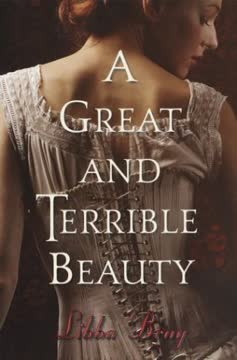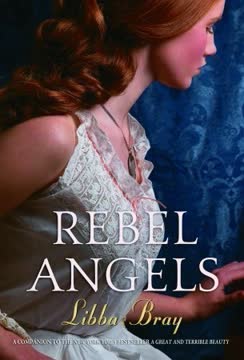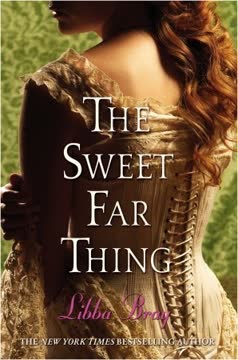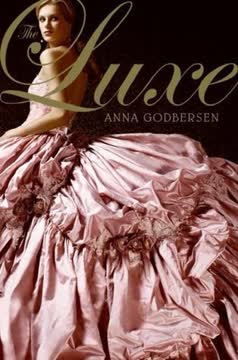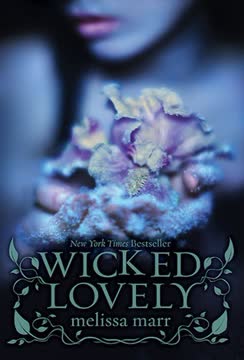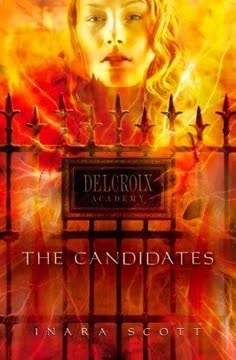Plot Summary
Cobra and a Birthday Wish
On her sixteenth birthday in Bombay, Gemma Doyle's life takes a dramatic turn. A cobra encounter in a bustling marketplace symbolizes the exotic and dangerous world she inhabits. Her strained relationship with her mother, Virginia, is highlighted by a heated argument over Gemma's desire to go to London. A mysterious warning from a stranger prompts Virginia to leave Gemma alone, setting off a chain of events that will forever alter Gemma's life. This pivotal moment marks the beginning of Gemma's journey into a world of visions and supernatural forces.
Visions and a Mother's Fate
As Gemma navigates the chaotic streets, she is struck by a terrifying vision of her mother's death. This vision becomes a grim reality when she discovers her mother dead, a dagger in her heart. This traumatic event marks the beginning of Gemma's struggle with visions that blur the line between reality and the supernatural. Haunted by guilt and confusion, Gemma is sent to London, hoping to escape the horrors of her past and find solace in a new beginning.
London's Shadows and New Beginnings
In London, Gemma is enrolled at Spence Academy, a finishing school for young ladies. Her brother, Tom, accompanies her, but their relationship is strained by the weight of their mother's death. At Spence, Gemma encounters a world of privilege and strict social codes, but also a place filled with secrets. She meets Felicity, Pippa, and Ann, girls who will become central to her journey. Despite the school's attempts to mold her into a proper lady, Gemma is drawn to the mysteries that lurk within its walls.
Spence Academy's Secrets Unveiled
Gemma discovers a diary belonging to Mary Dowd, a former student involved in a mysterious group known as the Order. The diary hints at a world of magic and power, and Gemma becomes determined to uncover the truth. Her curiosity leads her to the East Wing, a part of the school destroyed by fire, where she senses a connection to her visions. As she delves deeper, she realizes that the past and present are intertwined in ways she never imagined.
The Order's Mysterious Diary
The diary of Mary Dowd becomes a guide for Gemma as she navigates her visions and the secrets of the Order. Mary and Sarah's experiences with magic and the supernatural mirror Gemma's own struggles, offering her a glimpse into a world where dreams and reality collide. The diary speaks of realms and powers that could change everything, and Gemma is both terrified and intrigued by the possibilities. As she reads, she begins to understand that her visions are not just a curse, but a key to unlocking a hidden world.
A Midnight Pact in the Caves
Gemma, Felicity, Pippa, and Ann form their own secret society, the Order, inspired by the diary's tales of magic and power. In the caves near Spence, they perform a ritual, binding themselves to each other and to the mysteries they seek to uncover. The ritual is both thrilling and dangerous, as it awakens something within Gemma that she cannot fully control. The girls' bond is tested as they navigate the challenges of friendship, loyalty, and the unknown forces that threaten to consume them.
A Dance of Deception and Truth
During a dance lesson, Gemma's powers inadvertently pull Pippa into a vision, causing her to have a seizure. The incident exposes Pippa's secret struggle with epilepsy, a condition that could ruin her prospects in society. As Gemma grapples with the consequences of her actions, she learns more about the tragic fate of Mary and Sarah, the two girls who died in the East Wing fire. The truth about the Order and its connection to her own family begins to emerge, forcing Gemma to confront the darkness within herself and the world around her.
Secrets and Betrayals Unraveled
Gemma learns that her mother, Virginia, was once Mary Dowd, a member of the Order who committed a terrible act. This revelation shatters Gemma's trust, as she grapples with the truth about her mother's involvement in the death of a young girl. The weight of this knowledge forces Gemma to confront her own identity and the legacy of the Order. As she struggles with feelings of betrayal, Gemma realizes that her mother's past actions have set the stage for the dangers she now faces.
A Dangerous Game of Power
Despite warnings, Gemma and her friends continue to use the magic of the realms, intoxicated by the power it offers. Their actions begin to have unintended consequences, as the boundaries between the realms and reality blur. The girls' reckless use of magic attracts the attention of dark forces, threatening to unravel the delicate balance of their world. As tensions rise, Gemma must decide whether to heed her mother's warnings or risk everything for the allure of power.
The Huntress's Deceptive Promise
Felicity, driven by ambition, is manipulated by the huntress, who promises her the power to enter the realms at will. The huntress's true nature is revealed as a servant of Circe, the dark force seeking to reclaim the magic. Felicity's desire for power blinds her to the danger, leading the girls into a trap. Gemma realizes that the huntress's offer is a ruse, designed to lure them into a deadly confrontation with Circe's creature.
A Sacrifice and Its Consequences
In a desperate attempt to gain control, the girls make a sacrifice, unwittingly unleashing chaos. Pippa, overwhelmed by the pressures of her impending marriage, chooses to remain in the realms, consuming the forbidden fruit that binds her to that world. Her decision results in her death in the real world, leaving Gemma and her friends devastated. The loss of Pippa serves as a harsh reminder of the consequences of their actions and the dangers of tampering with forces beyond their understanding.
The Realm's Dark Revelation
Determined to save Pippa, Gemma returns to the realms, where she faces the creature that has been manipulating events. In a climactic battle, Gemma uses the power of forgiveness to weaken the creature, ultimately destroying it and freeing her mother's spirit. This confrontation reveals the true nature of the realms and the responsibilities that come with wielding its magic. Gemma emerges from the battle with a deeper understanding of her own strength and the importance of choice.
Forgiveness and New Beginnings
In the aftermath of Pippa's death and the battle with the creature, Gemma learns to forgive herself and her mother. She accepts the complexities of her identity and the legacy of the Order. As she moves forward, Gemma is determined to rebuild the Order and protect the realms from future threats. Her journey is one of self-discovery and empowerment, as she embraces the possibilities of her newfound abilities and the hope of a brighter future.
Characters
Gemma Doyle
Gemma is a sixteen-year-old girl whose life is upended by her mother's mysterious death. She possesses the ability to see visions, a power that both terrifies and intrigues her. Sent to Spence Academy in London, Gemma struggles to fit into a world of privilege and strict social codes. Her journey is one of self-discovery as she seeks to understand her powers and the secrets of the Order. Gemma is determined, curious, and often rebellious, driven by a desire to uncover the truth about her past and her place in the world.
Virginia Doyle
Virginia is Gemma's mother, whose death sets off the events of the story. She is a complex figure, both loving and distant, with secrets that haunt Gemma. Her connection to the Order and the supernatural world is a mystery that Gemma seeks to unravel. Virginia's death leaves Gemma with a sense of guilt and a longing for answers, driving her to explore the hidden realms of magic and power.
Felicity Worthington
Felicity is a student at Spence Academy and quickly becomes a central figure in Gemma's life. She is beautiful, confident, and manipulative, with a desire for power and control. Felicity is the leader of the group that forms the new Order, and her influence over the other girls is both magnetic and dangerous. Her complex relationship with Pippa and her own family secrets add depth to her character, making her both an ally and a rival to Gemma.
Pippa Cross
Pippa is a stunningly beautiful girl whose life is dictated by her family's desire for a prosperous marriage. She suffers from epilepsy, a condition she must keep hidden to avoid social ruin. Pippa's longing for true love and freedom from societal constraints makes her a sympathetic character, but her vanity and naivety often lead her into trouble. Her friendship with Felicity and Gemma is both a source of strength and conflict.
Ann Bradshaw
Ann is a scholarship student at Spence, often overlooked and underestimated by her peers. She is plain and self-conscious, but possesses a beautiful singing voice and a deep desire to belong. Ann's friendship with Gemma offers her a sense of acceptance and confidence, but she struggles with self-harm and feelings of inadequacy. Her journey is one of finding her own voice and place within the group.
Kartik
Kartik is a young man connected to the Rakshana, a secretive brotherhood with ties to the supernatural world. He follows Gemma from India to London, warning her of the dangers of her visions. Kartik's intentions are unclear, and his relationship with Gemma is fraught with tension and unspoken attraction. He is both a protector and a potential threat, as his true motives remain shrouded in mystery.
Mary Dowd
Mary is a former student of Spence whose diary becomes a key to understanding the mysteries of the Order. Her experiences with magic and the supernatural mirror Gemma's own struggles, offering guidance and insight. Mary's tragic fate and her friendship with Sarah Rees-Toome are central to the story, as they reveal the dangers and possibilities of the hidden realms.
Sarah Rees-Toome
Sarah is Mary's closest friend and fellow member of the Order. Her desire for power and recognition leads her to make dangerous choices, ultimately resulting in her downfall. Sarah's story serves as a cautionary tale for Gemma, highlighting the risks of ambition and the consequences of tampering with forces beyond one's control.
Mrs. Nightwing
Mrs. Nightwing is the headmistress of Spence Academy, a strict and imposing figure who enforces the school's rigid social codes. She is dedicated to maintaining the school's reputation and preparing the girls for their roles in society. Despite her stern exterior, Mrs. Nightwing is not without compassion, and her actions reveal a deeper understanding of the challenges faced by her students.
Miss Moore
Miss Moore is an art teacher at Spence who encourages the girls to think critically and express themselves creatively. She is a breath of fresh air in the conservative environment of the school, offering guidance and support to Gemma and her friends. Miss Moore's open-mindedness and willingness to challenge societal norms make her a valuable ally in Gemma's journey.
Plot Devices
Visions and Supernatural Powers
Gemma's ability to see visions is a central plot device that propels the story forward. These visions blur the line between reality and the supernatural, revealing hidden truths and dangers. They are both a gift and a curse, offering glimpses into the past and future while threatening Gemma's safety and sanity. The struggle to control and understand these powers is a key element of Gemma's character development.
The Order and the Diary
The Order, a secret society of women with magical powers, is a significant plot device that connects the past to the present. The diary of Mary Dowd serves as a guide for Gemma, revealing the history and secrets of the Order. This connection to the past provides context for Gemma's visions and the dangers she faces, as well as a framework for exploring themes of power, ambition, and friendship.
The East Wing and the Fire
The East Wing of Spence Academy, destroyed by fire, is a symbol of the school's hidden past and the secrets it holds. The fire that claimed the lives of Mary and Sarah is a pivotal event that shapes the narrative, serving as a reminder of the dangers of unchecked ambition and the consequences of tampering with the supernatural. The East Wing's presence looms over the story, a constant reminder of the past's influence on the present.
The Huntress
The huntress is a servant of Circe, manipulating the girls with promises of power and control. Her true intentions are revealed as she leads them into a trap, highlighting the dangers of ambition and the consequences of trusting false allies. The huntress serves as a catalyst for the events that unfold, driving the narrative toward its climactic confrontation.
The Runes of the Oracle
The runes are a powerful symbol of the magic of the realms, offering the girls the ability to wield its power. Their misuse of the runes leads to chaos and tragedy, as the boundaries between the realms and reality blur. The runes serve as a reminder of the responsibilities that come with power and the importance of understanding its limits.
Forgiveness
Forgiveness is a central theme in Gemma's journey, as she learns to forgive her mother and herself. This act of forgiveness is key to defeating the creature and freeing her mother's spirit, highlighting the transformative power of compassion and understanding. The theme of forgiveness underscores the narrative, offering a path to healing and new beginnings.
Analysis
"A Great and Terrible Beauty" by Libba Bray is a compelling exploration of identity, power, and the complexities of female friendship. Through Gemma Doyle's journey, the novel delves into the challenges of self-discovery and the struggle to balance personal desires with societal expectations. The supernatural elements serve as a metaphor for the inner turmoil and potential within each character, highlighting the dangers and possibilities of embracing one's true self. The story emphasizes the importance of choice, forgiveness, and the courage to confront one's fears. Ultimately, it is a tale of empowerment, as Gemma learns to navigate the intricacies of her identity and the responsibilities of her abilities, offering readers a poignant reflection on the journey to self-acceptance and the power of friendship.
Last updated:
FAQ
Synopsis & Basic Details
What is A Great and Terrible Beauty about?
- Victorian Girl's Supernatural Awakening: A Great and Terrible Beauty follows Gemma Doyle, a rebellious sixteen-year-old in 1895, who is sent to a strict English boarding school, Spence Academy, after her mother's mysterious death in India. There, she discovers she possesses the power to see visions and travel to a mystical realm, the Realms, a place where thoughts become reality.
- Unraveling a Secret Society: Gemma and her new friends, Felicity, Pippa, and Ann, form a secret society, delving into the diary of a former Spence student, Mary Dowd, which reveals a hidden history of a magical Order and its connection to the Realms. This discovery pulls them into a dangerous world of ancient magic, prophecies, and a looming dark entity.
- Confronting Personal and Ancient Evils: As Gemma grapples with her burgeoning powers and the secrets of her own family's past, she must navigate complex friendships, societal expectations, and the sinister forces of Circe, a powerful sorceress who seeks to control the Realms and Gemma's abilities. The narrative explores themes of identity, power, and the allure of forbidden knowledge.
Why should I read A Great and Terrible Beauty?
- Rich Victorian Gothic Atmosphere: Readers seeking an immersive historical fantasy will appreciate the meticulously crafted 1895 setting, blending the rigid social constraints of Victorian England with a dark, enchanting supernatural world. The contrast between Spence Academy's strict decorum and the wild magic of the Realms creates a captivating tension.
- Deep Exploration of Female Empowerment: The novel offers a profound look at young women grappling with identity, societal expectations, and burgeoning power. It delves into the complexities of female friendships, rivalries, and the universal desire for agency in a world that seeks to control them, making it highly relevant for discussions on feminism and self-discovery.
- Intricate Mystery and Symbolism: Beyond the surface plot, the story is rich with symbolism, hidden clues, and psychological depth. Readers who enjoy unraveling layers of meaning, from character motivations to the significance of recurring motifs like mirrors, gardens, and ancient goddesses, will find a rewarding and thought-provoking experience.
What is the background of A Great and Terrible Beauty?
- Late Victorian England's Social Fabric: The novel is set against the backdrop of 1895, a period of rigid social hierarchy, strict gender roles, and burgeoning industrialization in England. Spence Academy embodies these societal pressures, preparing girls for marriage and domesticity, while the underlying narrative subtly critiques these limitations, highlighting the era's hypocrisy and the stifling of female ambition.
- Spiritualism and Occult Fascination: The late 19th century saw a widespread fascination with Spiritualism, the occult, and the supernatural, often as a response to scientific advancements and a desire for meaning beyond the material world. Lady Wellstone's Spiritualist demonstration and the girls' exploration of ancient magic tap directly into this cultural context, reflecting a societal yearning for the mystical.
- Colonial India's Lingering Influence: Gemma's upbringing in Bombay, India, provides a crucial cultural and geographical contrast to England. Her initial alienation and the lingering presence of Indian characters like Kartik and the Gypsy community highlight the British Empire's global reach and the clash of cultures, subtly influencing Gemma's perspective and the story's magical elements.
What are the most memorable quotes in A Great and Terrible Beauty?
- "I am half sick of shadows.": This quote, taken from Alfred, Lord Tennyson's "The Lady of Shalott" and used as an epigraph, perfectly encapsulates Gemma's initial yearning for a life beyond the confined, reflected existence she feels trapped in. It foreshadows her desire to break free from societal expectations and embrace the direct experience of the world, even if it leads to danger.
- "Your mind is not a cage. It's a garden. And it requires cultivating.": Miss Moore's profound statement to her art class challenges the girls to think beyond prescribed roles and nurture their inner selves. This quote is a pivotal thematic declaration, emphasizing intellectual and emotional growth as a form of liberation, directly contrasting the restrictive "Spence motto: Grace, charm, and beauty."
- "There are no safe choices, Miss Temple. Only other choices.": Miss Moore delivers this line during an art class discussion about Eve's apple, directly addressing the illusion of safety in conformity. It underscores the novel's central theme that every decision, even inaction, carries consequences, pushing Gemma and her friends to confront their agency and the inherent risks of self-determination.
What writing style, narrative choices, and literary techniques does Libba Bray use?
- First-Person Narrative with Intrusive Visions: Bray employs a first-person perspective through Gemma Doyle, allowing intimate access to her thoughts, fears, and burgeoning powers. This is uniquely enhanced by Gemma's involuntary visions, which often interrupt the narrative, blurring the lines between reality and the supernatural, and creating a sense of disorientation and urgency for the reader.
- Gothic Tropes and Victorian Sensibility: The novel masterfully blends classic Gothic elements—a secluded, imposing boarding school (Spence Academy), hidden passages (East Wing), dark secrets, and a pervasive sense of foreboding—with the rigid social decorum and language of the Victorian era. This juxtaposition creates a rich, atmospheric backdrop that both grounds and elevates the fantastical elements.
- Symbolism and Intertextual Allusion: Bray heavily utilizes symbolism, from the recurring crescent eye amulet to the contrasting imagery of gardens and barren landscapes in the Realms, to deepen thematic meaning. The frequent allusions to literature, particularly Tennyson's "The Lady of Shalott," serve as intertextual anchors, providing layers of commentary on female agency, confinement, and the pursuit of knowledge.
Hidden Details & Subtle Connections
What are some minor details that add significant meaning?
- Brigid's Hex Doll and Hair Lock: Brigid's account of Sarah Rees-Toome (Circe) taking a lock of her hair for a hex doll (poppet) is a seemingly minor detail that foreshadows Circe's manipulative nature and her use of dark magic. It subtly reveals that Circe's power extends to personal, intimate forms of control, making her a more insidious threat than a mere sorceress.
- The Missing 1871 Class Photograph: The absence of the 1871 class photograph in the Spence Academy hallway, initially explained as "out of respect for the dead," is a crucial hidden detail. It symbolizes the deliberate erasure of Mary Dowd and Sarah Rees-Toome's history and the Order's existence, highlighting the school's complicity in suppressing uncomfortable truths and the girls' magical legacy.
- Miss Moore's Pocket Watch and Chiaroscuro Lesson: Miss Moore carrying a man's pocket watch, an unusual accessory for a woman of her time, subtly hints at her unconventional nature and perhaps a hidden past or independence. Her art lesson on "chiaroscuro" (the play of light and dark) directly mirrors the moral ambiguities and complex choices Gemma faces, suggesting that true understanding requires embracing both good and bad, not just the "pretty."
What are some subtle foreshadowing and callbacks?
- Gemma's Mother's Necklace and the Crescent Eye: Virginia Doyle's silver medallion with an all-seeing eye atop a crescent moon, initially presented as a "good-luck charm," is a powerful piece of foreshadowing. It's later revealed as the symbol of the Order, directly linking Gemma's mother to the magical society and hinting at Gemma's own inherited powers and destiny, a callback to ancient protective symbols.
- The Organ-Grinder's Monkey's Recurring Appearances: The organ-grinder's monkey, first seen in Bombay and later in Gemma's visions, acts as a subtle, unsettling motif. Its presence in the vision of Virginia's death and later in the temple realm, sitting on the Buddha's shoulder, suggests a watchful, perhaps mischievous, observer from the magical world, hinting at the thin veil between realms and the constant surveillance of the Order's activities.
- Pippa's "Lady of Shalott" Allusion: Pippa's suggestion to name their club "The Ladies of Shalott" is a poignant piece of foreshadowing. The poem's themes of confinement, longing for the outside world, and tragic death resonate deeply with Pippa's own fate, trapped by societal expectations and ultimately choosing a different, fatal escape into the Realms.
What are some unexpected character connections?
- Miss Moore's Connection to the Order's Lore: Miss Moore, initially appearing as a progressive art teacher, reveals an unexpected depth of knowledge about ancient goddesses and the Order's legends. Her casual familiarity with these myths, coupled with her cryptic advice, subtly positions her as a potential, albeit distant, inheritor of the Order's wisdom, suggesting a hidden lineage or understanding beyond her role as a teacher.
- Kartik's Brother, Amar, as Virginia's Guardian: The revelation that Kartik's brother, Amar, was Virginia Doyle's guardian and died protecting her from Circe's tracker creates a profound and tragic connection between Kartik and Gemma. This shared loss and the intertwined fates of their families underscore the deep, ancient conflict between the Rakshana and the Order, making their personal animosity a reflection of a larger, mystical war.
- Mademoiselle LeFarge's Deceased Fiancé, Reginald: The seemingly minor detail of Mademoiselle LeFarge's tintype of her fiancé, Reginald, and his subsequent appearance as a lost spirit in the Realms, creates an unexpected emotional connection. It humanizes the stern teacher, revealing her hidden grief and longing, and provides Gemma with a tangible, compassionate reason to use her powers for good, bridging the gap between the mundane and the magical.
Who are the most significant supporting characters?
- Miss Moore: The Unconventional Mentor: Miss Moore stands out as a significant supporting character, offering Gemma intellectual and artistic freedom within the rigid confines of Spence. Her progressive views, deep knowledge of mythology, and encouragement of critical thinking provide Gemma with an alternative perspective to Mrs. Nightwing's strictures, subtly guiding her towards understanding her powers and the complexities of the world.
- Kartik: The Reluctant Protector and Moral Compass: Kartik, initially an antagonist, evolves into a crucial, albeit conflicted, supporting character. As a member of the Rakshana, he represents an opposing force to the Order, yet his warnings and actions often serve to protect Gemma. His personal loss and his struggle with his duty make him a complex figure, offering a moral counterpoint to Gemma's burgeoning power and the allure of the Realms.
- Brigid: The Keeper of Spence's Dark History: Brigid, the housekeeper, is more than just a stern authority figure; she is a living archive of Spence's hidden past. Her gossipy anecdotes and firsthand accounts of Mary and Sarah's actions, including the hex doll and the fire, provide vital clues to Gemma. Brigid's fear and superstition underscore the real-world consequences of the magical events, making her a grounded, if unwitting, informant.
Psychological, Emotional, & Relational Analysis
What are some unspoken motivations of the characters?
- Felicity's Deep-Seated Insecurity and Need for Control: Beneath Felicity's charismatic and manipulative exterior lies a profound insecurity, stemming from her mother's abandonment and her father's emotional distance. Her relentless pursuit of power and control within the Order, and her desire to "own Spence," are unspoken motivations driven by a desperate need to prove her worth and avoid being left behind or ignored again.
- Ann's Desire for Validation and Escape from Invisibility: Ann's self-harm (cutting her wrists) and her longing to be "beautiful" in the Realms reveal an unspoken motivation: a desperate need for validation and to escape her perceived invisibility and low social status. Her quiet determination to belong, even if it means enduring cruelty, stems from a deep-seated fear of being utterly forgotten or dismissed.
- Virginia Doyle's Guilt and Atonement: Virginia Doyle's (Mary Dowd's) initial reluctance to reveal her past and her attempts to shield Gemma from the Realms are driven by an unspoken, profound guilt over her role in Carolina's death and the subsequent closure of the Realms. Her motivation is atonement and a desperate desire to protect her daughter from repeating her own tragic mistakes, even if it means lying.
What psychological complexities do the characters exhibit?
- Gemma's Struggle with Identity and Moral Ambiguity: Gemma exhibits significant psychological complexity, grappling with her dual identity as a proper Victorian lady and a powerful sorceress. Her guilt over her mother's death, her attraction to forbidden power, and her internal conflict between duty and desire create a morally ambiguous protagonist. She constantly questions her own goodness, fearing she might be a "monster," reflecting the chiaroscuro theme of light and dark within herself.
- Pippa's Internalized Societal Pressure and Escapism: Pippa's psychological complexity lies in her internalization of rigid societal expectations, particularly regarding marriage and beauty, which clash with her romantic ideals. Her epilepsy, a hidden "flaw," exacerbates her vulnerability, leading her to seek escapism in the Realms and in the fantasy of a perfect champion. Her ultimate choice to remain in the Realms highlights the psychological toll of a life lived under constant scrutiny and without true agency.
- Kartik's Conflict Between Duty and Empathy: Kartik's character is complex due to his internal conflict between his duty to the Rakshana (to keep the Realms closed and Gemma's powers suppressed) and his growing empathy and attraction towards Gemma. His initial harshness and warnings are rooted in a protective instinct, but his actions, like burying the deer and his lingering touch, reveal a deeper, more human connection that challenges his rigid adherence to his brotherhood's mission.
What are the major emotional turning points?
- Gemma's Vision of Her Mother's Suicide: The most significant emotional turning point for Gemma is witnessing her mother's suicide in a vision. This traumatic event not only triggers her powers but also burdens her with immense guilt and a desperate need for answers, setting her on a path of self-discovery and confrontation with the supernatural.
- Pippa's Seizure and the Revelation of Her Epilepsy: Pippa's seizure during the dance lesson is a major emotional turning point, exposing her hidden affliction and the vulnerability beneath her vain exterior. It forces Gemma to confront the real-world consequences of her powers and the harsh societal judgments faced by her friends, deepening her understanding of their struggles.
- Virginia Doyle's Confession as Mary Dowd: Virginia's confession to Gemma in the Realms, revealing her past as Mary Dowd and her role in Carolina's death, is a devastating emotional turning point. It shatters Gemma's idealized image of her mother, replacing it with a complex, flawed reality, and forces Gemma to grapple with forgiveness and the inherited burden of her family's secrets.
How do relationship dynamics evolve?
- Gemma and Felicity: From Rivalry to Complex Alliance: Their relationship evolves from initial rivalry and Felicity's manipulative pranks (locking Gemma in the chapel, the sapphire ring incident) to a complex alliance. Felicity's vulnerability after her father's abandonment and Gemma's secret-keeping create a bond of mutual dependence, though Felicity's ambition and desire for power continue to test their loyalty.
- Gemma and Ann: From Pity to Mutual Support: Gemma's initial interactions with Ann are marked by pity and a sense of Ann's social awkwardness. However, as they share the secrets of the Order and Ann's self-harm is revealed, their relationship deepens into one of mutual support and understanding. Gemma's defense of Ann and Ann's quiet loyalty forge a genuine friendship, highlighting Ann's growth in confidence.
- Gemma and Kartik: From Antagonism to Unspoken Connection: Their dynamic shifts from initial antagonism and suspicion, rooted in their families' opposing magical factions (Rakshana vs. Order), to an unspoken, intense connection. Kartik's warnings and protective actions, coupled with their shared experiences in the Realms and the charged kiss, reveal a deep, complicated attraction that transcends their ideological differences, hinting at a future alliance.
Interpretation & Debate
Which parts of the story remain ambiguous or open-ended?
- The Full Extent of Circe's Power and True Nature: While Circe is revealed as Sarah Rees-Toome and her creature is defeated, the full extent of her power and her ultimate fate remain somewhat ambiguous. The narrative suggests she is a formidable, ancient force, but her origins and the precise nature of her connection to the dark creature are not fully detailed, leaving room for future exploration or reader interpretation of her enduring threat.
- The Future of the Reborn Order and the Realms: The ending establishes Gemma's intention to rebuild the Order and protect the Realms, but the specifics of this future are left open-ended. How will the Order function? What new challenges will they face? The narrative concludes with Gemma embracing her path, but the journey of restoring balance to the Realms and integrating magic into the world is clearly just beginning.
- Kartik's Role and the Rakshana's Future: Kartik's final interaction with Gemma, where he acknowledges "no going back" but his exact meaning is unclear, leaves his future role ambiguous. Will he fully abandon the Rakshana to support Gemma, or will he remain a conflicted figure? The future of the Rakshana brotherhood and their relationship with the newly emerging Order is an open question, suggesting a potential for continued conflict or an uneasy alliance.
What are some debatable, controversial scenes or moments in A Great and Terrible Beauty?
- The Sacrifice of the Deer and Its Moral Implications: The scene where Felicity, Pippa, and Ann hunt and brutally kill a deer as a "sacrifice" to gain power is highly controversial. Readers debate whether this act is a necessary evil for their empowerment, a descent into darkness, or a commentary on the corrupting nature of unchecked ambition. It forces a confrontation with the moral cost of magic and the girls' willingness to commit violence.
- Mary Dowd's (Virginia's) Murder of Carolina: The revelation that Gemma's mother, Mary Dowd, actively participated in the murder of the young girl, Carolina, as a sacrifice, is a deeply controversial moment. It challenges the reader's perception of Gemma's mother as a purely benevolent figure and forces a debate on the nature of forgiveness, inherited guilt, and whether past atrocities can ever truly be atoned for.
- The Girls' Reckless Use of Magic for Petty Revenge: The girls' initial use of magic to silence Cecily, give a cupid breasts, or make Ann beautiful raises questions about the ethics of their power. This controversial aspect highlights the fine line between empowerment and abuse, prompting readers to consider the responsibility that comes with extraordinary abilities and the temptation to use them for selfish or vindictive purposes.
A Great and Terrible Beauty Ending Explained: How It Ends & What It Means
- The Climax: Forgiveness as the Ultimate Weapon: The ending of A Great and Terrible Beauty culminates in Gemma's confrontation with Circe's creature in the Realms. She discovers that the creature is sustained by the unresolved guilt and pain of Mary Dowd (her mother). Gemma's act of forgiving her mother ("Mother… I forgive you. I forgive you, Mary Dowd.") weakens the creature, allowing her to destroy the runes that tether it to the Realms and free her mother's spirit. This signifies that true power lies not in control or revenge, but in emotional release and acceptance.
- Pippa's Choice and the Cost of Escapism: Pippa, overwhelmed by her forced marriage, chooses to remain in the Realms, consuming the forbidden berries that bind her to that world. This decision, while granting her a fantastical escape, results in her death in the mortal world. Her choice highlights the novel's theme that escaping reality, even into a beautiful dream, comes at a profound, irreversible cost, and that true freedom requires confronting one's circumstances
Review Summary
A Great and Terrible Beauty receives mixed reviews. Many praise its Victorian setting, magical elements, and exploration of female friendships. Critics appreciate Bray's writing style and character development. However, some find the plot predictable and characters unlikable. Concerns are raised about racial stereotyping, anachronistic dialogue, and heavy-handed feminist messages. The book polarizes readers, with some loving its blend of historical fiction and fantasy, while others find it lacking depth and originality. Overall, it's considered an entertaining but flawed young adult novel.
Gemma Doyle Series
Similar Books
Download PDF
Download EPUB
.epub digital book format is ideal for reading ebooks on phones, tablets, and e-readers.
